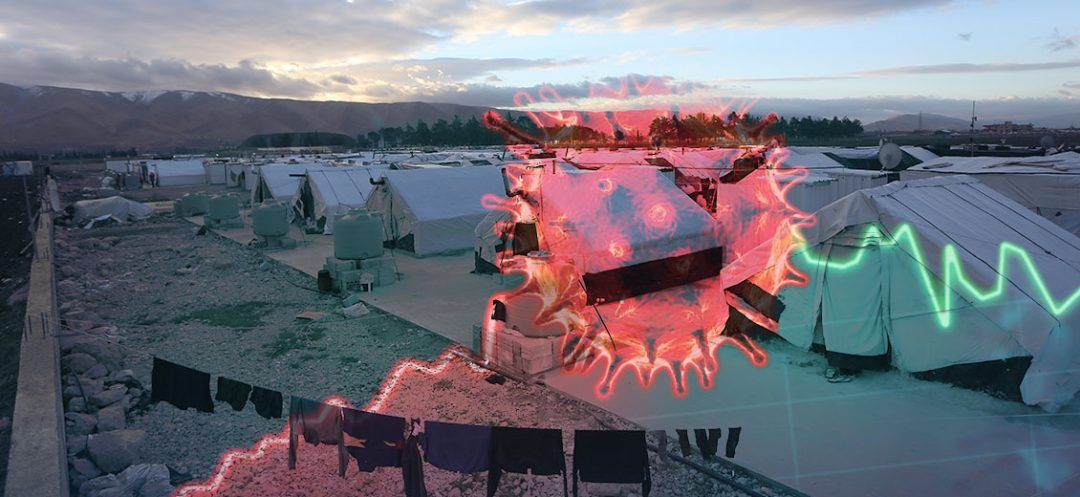
The precarious sanitary conditions in which Syrian migrants live in Lebanon have contributed over the past decade to the re-emergence and exacerbation of certain epidemics. With no effective solutions in sight, Lebanon is nearing a breaking point.
The recent outbreak of several infectious diseases in Syrian migrant camps in Lebanon, including jaundice, hepatitis A, scabies and various types of skin rashes, have sparked serious concerns. While these diseases are the only ones confirmed so far, there is no evidence to rule out the presence of other infections, especially in Ersal, in the Bekaa Valley. The lack of regular, systematic, large-scale screenings makes it difficult to draw definitive conclusions.
The Ministry of Health seems convinced of this threat. "The emergence of jaundice in Syrian migrant camps is particularly alarming because this disease is contagious, and the poor conditions within the camps could facilitate its spread as well as the emergence of other epidemics," the Ministry indicated in a statement dated May 10.
These outbreaks are a threat not only to the migrants' health but also to the neighboring villages. Most of these Syrians reside in the most disadvantaged areas of the country, especially in the Bekaa Valley and northern Lebanon, where much of the host community also lives in precarious conditions.
Funding Cuts
Overcrowding, combined with the failure or complete absence of adequate infrastructure, has severely deteriorated sanitary conditions in the (approximately) 160 camps in Ersal. Septic tanks are not being emptied and do not meet sanitary standards. This issue is attributed to a drastic cut in funds allocated to UNICEF for water, sanitation and hygiene services.
According to Edouard Beigbeder, UNICEF's representative in Lebanon, the UN agency needs at least $12 million to provide—through its partners—the "minimum acceptable level" of these services to migrants in unofficial camps. "So far, and due to further funding cuts, less than $4 million is available," he deplored in a statement released on May 13.
Furthermore, on May 2, the United Nations High Commissioner for Refugees (UNHCR) announced a reduction of 60 to 70% in funding for "non-urgent" medical interventions—those without an immediate threat to life—effective June 1. These budget cuts raise concerns about their potential impact on epidemic control. Such a scenario could further strain an already challenged healthcare system grappling with the country's countless difficulties.
Outbreak
Due to its porous borders with Syria, Lebanon has experienced several epidemics linked to the massive influx of nearly two million Syrian migrants, some fleeing the war in their country. In 2013, an epidemic outbreak of cutaneous leishmaniosis was declared—a skin infection caused by the Leishmania parasite transmitted through sandfly bites. According to a study published in April 2014 by the team, led by infectious disease specialist Abdel Rahman Bizri, 1,033 cases were recorded in 2013, 96.6% of them among Syrian migrants. "In 2010, the maximum number of reported cases per year was six," the authors specify. "Healthcare professionals, medical facilities and Lebanese authorities are ill-prepared to handle a potential epidemic of this disease, especially if it occurs in rural areas with limited medical resources."
Waves of Contamination
Moreover, the incidence rate of hepatitis A in Lebanon increased significantly in 2013, reaching 33 cases per 100,000 people, compared to only 5 to 18 cases per 100,000 before 2011. The average annual number of reported hepatitis A cases in Lebanon was about 300 between 2001 and 2012. However, in 2014, the Ministry of Health recorded nearly 2,600 new cases among Lebanese nationals. This upsurge was mainly observed in the governorates of Bekaa and North Lebanon, which are closest to the Syrian borders and have the highest density of migrants. Moreover, in 2013, only 220 cases of Syrians showing symptoms of hepatitis A were reported to the Lebanese authorities, a figure that rose to 859 (cases) in 2014.
A surge in hepatitis A cases was recorded in Lebanon in 2022, with 609 cases reported, according to a statement released by the Ministry of Health on June 22. The majority of these cases affected residents of the above-mentioned governorates. A significant increase was particularly noted during the summer, linked to water contamination and the deterioration of sanitary infrastructure. This has led to the contamination of drinking water with fecal matter, given that the hepatitis A virus (HAV) is transmitted through the fecal-oral route. Water sanitation and vaccination against HAV could help contain the epidemic. However, financial restrictions and the need to prioritize health budgets curb the administration of the HAV vaccine, especially to vulnerable individuals.
Heavy Toll
On October 5, 2022, a cholera outbreak was also reported in the rural region of Akkar, in northern Lebanon. This acute diarrheal infection is caused by consuming water or food contaminated with the bacterium Vibrio cholerae. The caretaker Minister of Health, Firas Abiad, suggested at the time that this epidemic wave was likely linked to the ongoing outbreak in Syria. This marked the first recurrence of cholera in Lebanon since 1993. According to data from local authorities, the last case of cholera had been recorded on January 5, 2023. The final toll was significant: 671 confirmed cases, 23 deaths and over 8,000 suspicious cases.
Lebanon has grappled with several measles outbreaks over the past two decades. Measles, a highly contagious viral infection, spreads through airborne transmission. Between 2010 and 2012, the country averaged 10 reported measles cases annually. However, in 2013, an epidemic struck, tallying 1,760 cases, 13.2% of them among Syrian migrants. This coincided with a significant influx at the time. Five years later, another wave occurred, with 952 and 1,070 cases reported in 2018 and 2019, respectively. The hardest-hit governorates were the Bekaa (44.5%) and North Lebanon (34.4%). In 2023, a third wave emerged, with 77% of cases unvaccinated.
Finally, the influx of Syrian migrants in Lebanon has been linked to an increased prevalence of tuberculosis, which was dwindling before 2011. In 2012, the number of tuberculosis cases increased by 27%, with a total of 630 cases reported, and the figures kept rising until 2014.
Read more





Comments